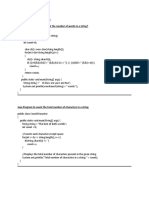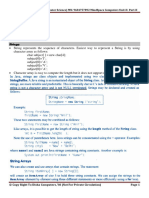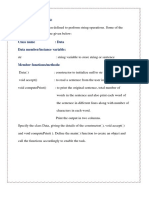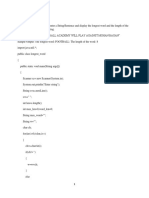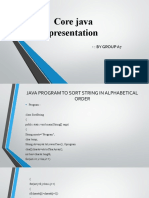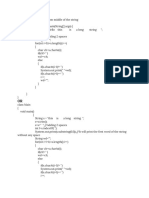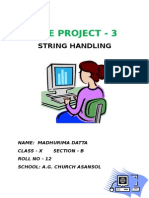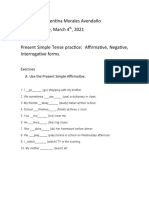0% found this document useful (0 votes)
18 views22 pagesString Notes Julyl 2025
The document provides detailed notes on String Manipulation in Java, covering the definition of strings, various string functions such as toUpperCase(), toLowerCase(), trim(), length(), and charAt(), along with examples. It also includes programming exercises that demonstrate how to manipulate strings, count vowels and consonants, and display patterns using strings. Students are instructed to complete these notes and submit them by a specified deadline.
Uploaded by
vasupallidevi171Copyright
© © All Rights Reserved
We take content rights seriously. If you suspect this is your content, claim it here.
Available Formats
Download as DOCX, PDF, TXT or read online on Scribd
0% found this document useful (0 votes)
18 views22 pagesString Notes Julyl 2025
The document provides detailed notes on String Manipulation in Java, covering the definition of strings, various string functions such as toUpperCase(), toLowerCase(), trim(), length(), and charAt(), along with examples. It also includes programming exercises that demonstrate how to manipulate strings, count vowels and consonants, and display patterns using strings. Students are instructed to complete these notes and submit them by a specified deadline.
Uploaded by
vasupallidevi171Copyright
© © All Rights Reserved
We take content rights seriously. If you suspect this is your content, claim it here.
Available Formats
Download as DOCX, PDF, TXT or read online on Scribd
/ 22











